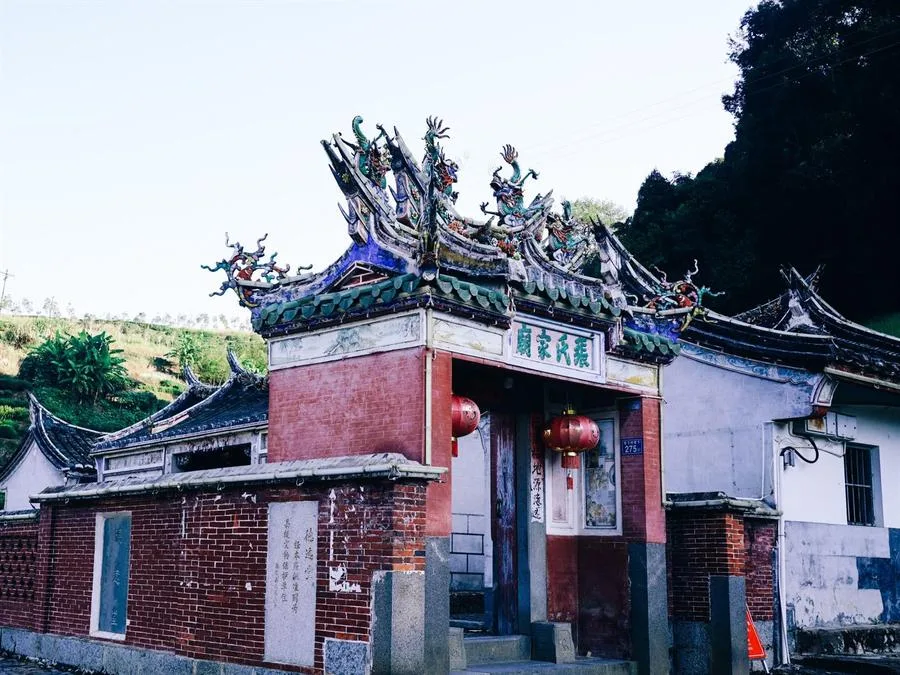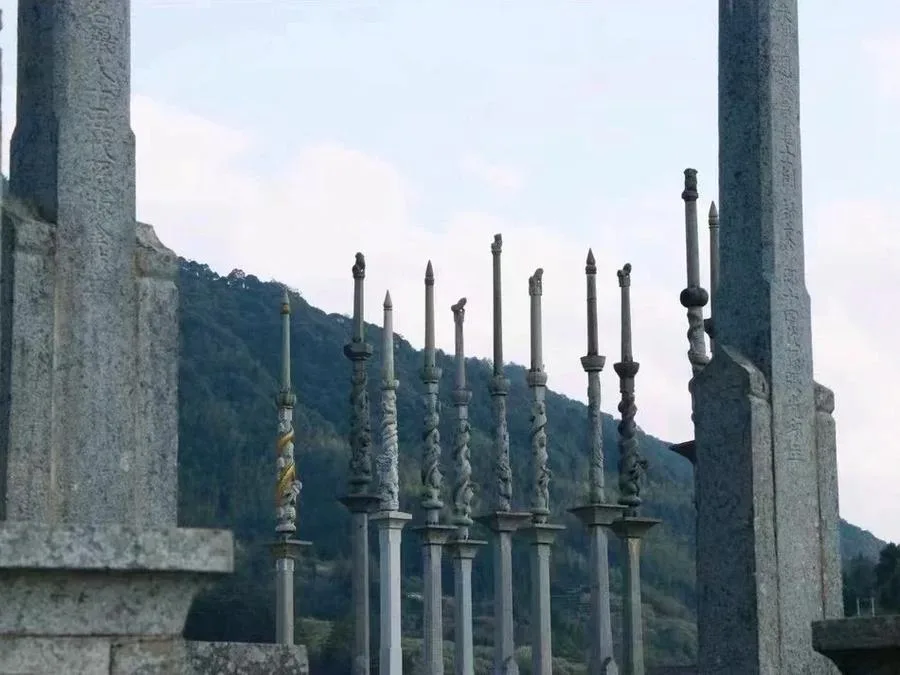Taxia Village (塔下村) is a quintessential Hakka settlement, with its layout and architecture well-preserved. This village is a testament to the Hakka’s kinship-based social structure and communal living traditions. It also serves as a vital example for studying the historical evolution of Fujian Tulou (earthen buildings) and the construction techniques of large rammed earth residences.
The village is home to several nationally protected cultural relics, such as Deyuan Hall and Shilong Flag. These historical sites, along with traditional customs like the “Spring Festival Sacrifice” and “Grand Fortune Ceremony,” highlight the Hakka culture’s adherence to and inheritance from Central Plains culture. This provides valuable material for researching the transformation of Central Plains culture and the history of Han migration to the south.
The Tulous in Taxia Village are built along the river and exhibit a variety of forms. In addition to the common square and circular Tulous, there are also apron-shaped and L-shaped Tulous. The most unique are the single-courtyard stilt houses in the Zhejiang-Hangzhou water town style, which feature timber and brick-wood structures. This variety creates a picturesque scene of large and small buildings interspersed with each other. Notably, Yude and Shunchang Tulous are located on either side of a stream, resembling a Tai Chi symbol, earning Taxia Village the nickname “Tai Chi Water Village.”
Taxia Village also boasts intangible cultural heritage such as Hakka puppet shows and the construction techniques of Hakka Tulous. These elements further enrich the cultural tapestry of the village, making it an essential site for those interested in Hakka culture and history.
Table of Contents
- Basic Information
- Location and Transportation
- Highlights of Taxia Village
- Other Iconic Attractions in Zhangzhou
Basic Information
| Estimated Length of Tour | 1 – 2 hours |
| Ticket Price | 90 RMB |
| Opening Hours | 8.30 – 17.00 |
| Telephone Number | 0086-400-888-5111 |
Location and Transportation
Taxia Village is a traditional Chinese village located in Shuyang Town, Nanjing County, Zhangzhou City, Fujian Province. The village lies in the western part of Shuyang Town and covers an area of 5.68 square kilometers.
To reach Taxia Village, you can take a train to Nanjing Railway Station. Upon arrival, you can catch a tourist bus directly from outside the station. These buses depart approximately every hour, with a fare of 20 RMB per person, and the journey takes about 1.5 hours. Alternatively, you can go to the Nanjing Bus Station and take the special Tulou bus line to the village, also for 20 RMB per person.
Highlights of Taxia Village
Deyuan Hall (德远堂)

Deyuan Hall is a nationally recognized cultural heritage site and one of the most well-preserved ancient ancestral halls in China. Constructed in the 25th year of Emperor Qianlong’s reign during the Qing Dynasty (1760), Deyuan Hall has undergone several renovations over the centuries, including in 1850, 1898, 1928, 1941, 1977, and 1993. Despite these refurbishments, the hall retains its original Qing Dynasty architectural style.
Located on the eastern slope of the village, Deyuan Hall is oriented north to south, with a backdrop of lush green hills and a view of a flowing stream. It features a two-section architectural layout. The grand entrance is flanked by large stone drums, with each drum featuring traditional sculptures of figures from the “Twenty-four Filial Exemplars.” The roof ridge is adorned with colorful ceramic sculptures depicting historical and legendary figures from the “Three Kingdoms,” “Eight Immortals,” and “Fengshen Bang,” alongside mythical creatures like dragons, tigers, lions, qilins, phoenixes, and pheasants. The ridge is also decorated with flowers such as peonies, camellias, orchids, and chrysanthemums.
One of the most notable features of the hall is the inscription on the main hall’s crossbeam, a famous admonition by the philosopher Zhu Xi: “Even if the descendants are unwise, they must study poetry and books; even if the ancestors are distant, the sacrifices must be sincere.”
Shilong Flagpoles (石龙旗杆)

In front of Deyuan Hall stand 24 stone flagpoles, each over 10 meters tall, making it the site with the most stone flagpoles among ancient Chinese ancestral halls. These flagpoles, unique to Hakka architecture, were erected to celebrate members of the clan who achieved success in the imperial examinations. The height, base style, and carvings of the flagpoles vary according to the rank and type (civil or military) of the honoree’s title.
Originally, the flagpoles served to inspire the younger generation to study diligently and strive for academic and official success. The bases of these flagpoles come in various shapes, including square, hexagonal, and octagonal. The middle section of each pole is inscribed with the date of erection, the honoree’s identity, generational rank, and name. The top of the flagpole features intricate carvings: a “brush” symbolizes a civil official, while a “lion” represents a military officer. Most flagpoles are dedicated to one individual, but some honor two or even three people, including a family where three generations erected a total of five flagpoles.





